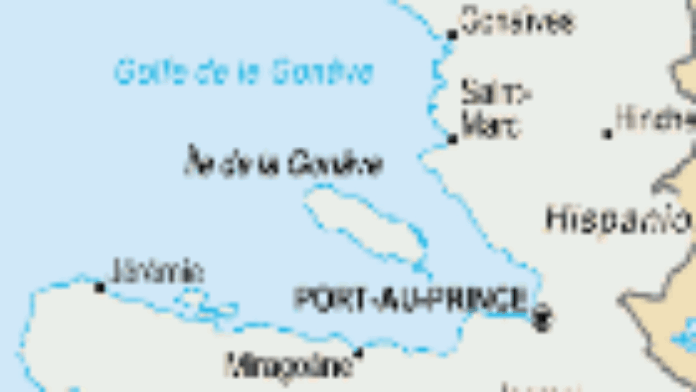
At a corner street in Port-au-Prince, Haiti’s capital, a sweets vendor takes 5 cents from a schoolgirl and hands her what looks like a disk-size biscuit. The young girl breaks a portion and nibbles hesitatingly away. Her stomach hurts after having her third helping for the day, but Marie-Yvonne has to “fill it with something (…) because it hurts even more without anything inside”, which is why she got “the mud cake instead of candy”. She will go for another portion of mud cake before sundown.
Mud cakes also known as pica, are made from earth, oil, sugar and salt are sold everywhere in Haiti.
Caught right in the heart of a region that boasts of manifold economic and cultural factors, which constitute the Caribbean and American pride, Haiti is only an hour away from the United States of America and yet is the shameful bellwether of poverty in the Northern Hemisphere. Haiti’s population is essentially made up of French victims of the trans-atlantic slave trade from Africa. In recent months a large portion of the country’s population has been practising geophagy (eating earth, clay, dirt, sand…) to survive.
About three-quarters of Haiti’s eight million nationals lives way below the poverty line while one in 12 children does not reach the age of five. According to Dr Jean-William Pape, co-founder and director of a locally based health Centre, “If you only knew the misery these people suffer – they get up very early (until nightfall), without any food, in an attempt find a means to survive…” on a land rendered practically barren by four continuous and unparalleled storms that ravaged the country between August and September last year, wrecking havoc to the agricultural sector.
The dismally poor country has been scraping to get by as they strive to live with the exorbitant rise in the cost of living while the food crisis coupled with the effect of the global economic meltdown continue to reduce advanced countries (Iceland) into pauper economies. As a consequence, the Haitian government’s dependence on foreign aid for 60 per cent of its budget as well as remittances from the quarter of its nationals living abroad have been threatened. Subsidies and rice price cuts have amounted to nothing. If it is not free, like mud, Haitians can simply not afford it.
While the estimated food expenditure average for nationals of rich countries amounts to 10 per cent of their income, nationals of poorer countries spend between 60 and 80 per cent of their income on food. In Haiti, the average expenditure on food alone could be over 100 per cent following an IMF report, which indicated that more than half of those lucky enough to be employed in Haiti are paid 44 cents per day. Mud cakes, meanwhile are still affordable, but not for long, that is, until its health hazards are felt across the country.
According to Stephen Lendman, a Research Associate of the Centre for Research on Globalisation, who quoted Raj Patel’s book “Stuffed and Starved: The Hidden Battle for the World Food System” in an extensive report on the global food crisis, two identified factors are to blame for the present state of affairs. Firstly, price shocks and modern development policies making food unaffordable and secondly, the (inability of) powerful people (to) listen (and) realise that food isn’t a mere commodity, (but) a human right.
For now Haitians, who were the forerunners of the recent food riots that hit the world are too hungry or too busy in search of food and jobs to brave a day of protest, but another violent eruption may be fermenting beneath the surface. “What’s happening in Haiti is an augury to the rest of the developing world…” says Raj Patel.

